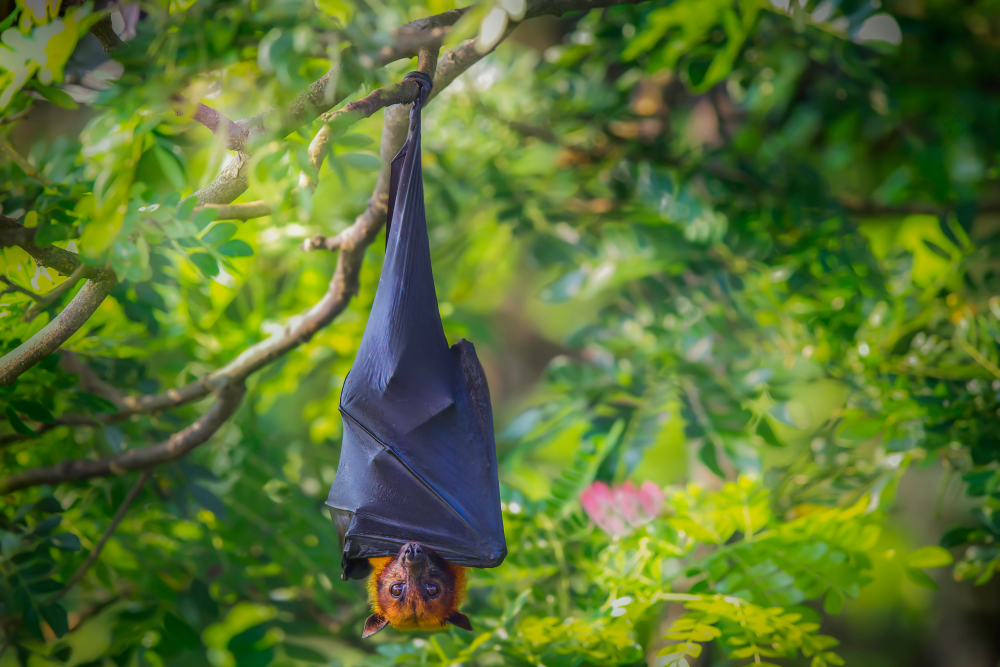An entirely new kind of virus has been detected in bats in Queensland, Australia, during routine monitoring of flying foxes. The virus is a kind of henipavirus, and only the fourth of its kind to ever be isolated and grown in a lab.
The rest of this article is behind a paywall. Please sign in or subscribe to access the full content.
The disease was detected in the urine of flying foxes roosting in bushland near Boonah, and if you’re wondering how on Earth scientists go about collection urine samples from giant bats? So were we.
“Collecting bat urine samples is a complex process,” said lead researcher Jennifer Barr, an experimental scientist at CSIRO’s Australian Centre for Disease Preparedness (ACDP), in a statement. “First, we need to observe where the bats are roosting during the day and where they will be most likely to return after feeding through the night.”
“Once we know where the bats are likely to go, we have to prepare ourselves for collection. We wear full body personal protective equipment. It’s essential, but also can get pretty hot and uncomfortable, so you want to be ready to go once your gear is on.”
“That’s when the tarps come out. We drape them under the roosting bats in the evening just before they fly out for feeding, aiming to get the tarps laid out as flat as possible. The team returns to the collection site at sunrise, once the bats have returned from feeding all night, and collect the urine before it evaporates or dries out.”

What else are they hiding under those fabulous capes?
Image credit: Cayakorn Thienglam / Shutterstock.com
Those urine samples were gathered and taken to a lab for further testing. Initial results showed the samples were clear for Hendra virus, something they were looking for. Then, they uncovered something totally unexpected.
“We didn’t know it at the time, but some of those samples held a virus that had never been described before,” said Barr (and a round of applause for personal protective equipment, please!).
Within the urine samples was a genetic sequence that indicated they were looking at an entirely new henipavirus. This is a group of emerging bat-borne viruses that can cause illnesses like Hendra and Nipa, with symptoms including respiratory illness and encephalitis in humans.
It took a while, but eventually they were able to isolate the virus, which means they could and grow it in the lab. The reward for this is getting to name it, and the team has gone for the Salt Gully Virus after the location where it was first detected. As for its potential? We’ll need a bit more time on that.
We already known this new henipavirus behaves differently to the others. Salt Gully Virus doesn’t act on the same receptors as Hendra and Nipah, which complicates our ability to establish who – or what species – are vulnerable to infection. However, that’s not to say that the discovery means we need to be more wary of bats and, in fact, it’ll help us in identifying illness should it be transmissible to humans.
“Now that we’ve identified the virus, diagnostic tests can be developed,” said Barr. “This means if a spillover from bats and disease outbreak were to occur, we’d have the tools to detect this virus earlier – enabling timely measures to prevent further spread.”
Source Link: Entirely New Virus Detected In Bat Urine, And It’s Only The 4th Of Its Kind Ever Isolated